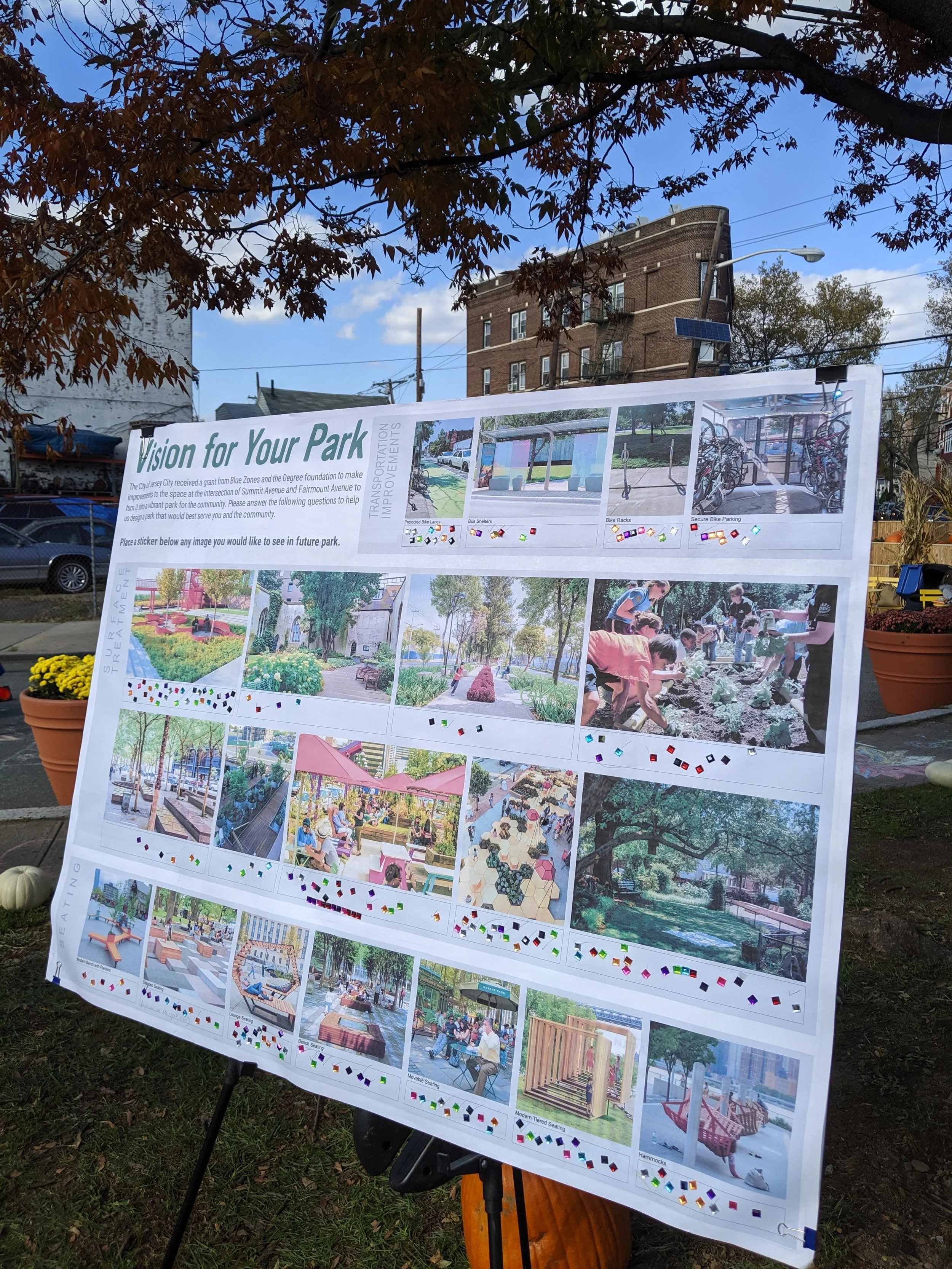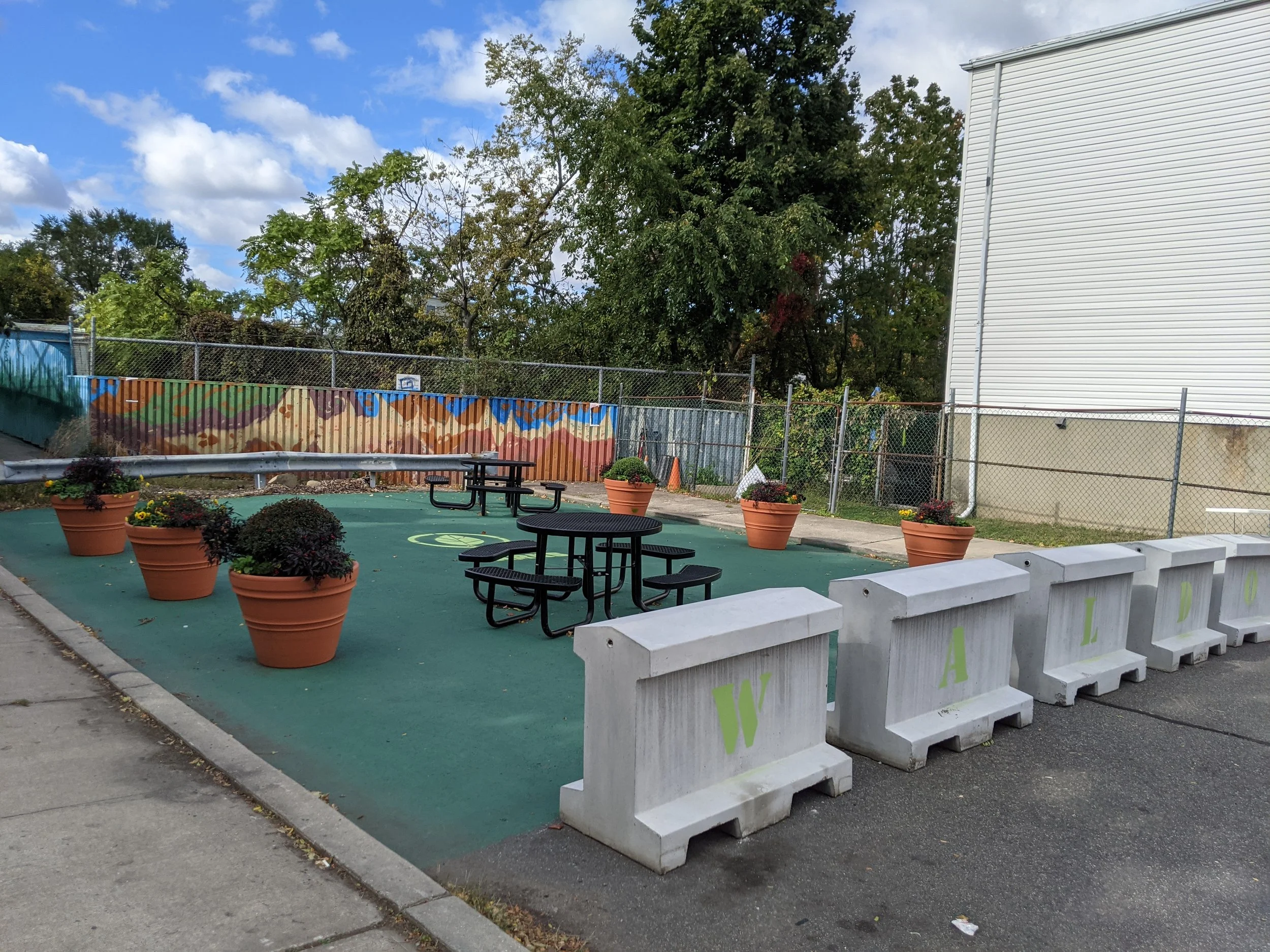Placemaking
community engagement
There was a significant number of the community that was skeptical of the Waldo Avenue Popup Park, worried about noise late a night, garbage, and the space being used to sell and use drugs.
To allay their concerns, the popup park was designed and built so that it could be dismantled in about a day if the community decided against keeping the space. Also, there was a firm deadline as to when it would be decided to keep the space, or eliminate it.
Placemaking is the deliberate act of creating a space that people find welcoming enough to visit and spend time.
The first step is engaging the community with events, meetings, Zoom, and good old fashioned knocking on doors to find out what the people want from a public space.
But that’s just the beginning. The community must come to embrace that it is their space to plan, protect, and act as its shepherd. Therefore, the people who will use the space must not just be involved with the idea phase, but planning, building, and maintaining it, as well.
When the City partnered with residents to create a temporary public space at a dead end at Waldo Avenue, the first step was talking to the neighbors of that area, and getting their input, feedback, and overall impressions. Later, after all that was folded into the planning, the community was invited to a “planting party” to festoon the planters with color and greenery. Months later, their feedback was sought again at a Halloween event. And throughout, QR codes were kept at the site during the trial period to hear how they were using the space.
For Fairmount Park, the City was creating a new public space by eliminating sections of two streets and combining them into a new public space. First the community had to buy into the streets being blocked, then that temporary space had to be made attractive and useful, then the neighbors had to then be polled on what they wanted from a permanent installation.
staging the space
For a public space to be successful, it has to look like an appealing place to visit, to have a conversation, to sit and watch their children play.
If a site is considering seating, for example, will it be meant to just provide a short rest while waiting for the bus, or for lingering over a lunch break, or to enjoy the scenery.
At Oak Street Park, benches were placed for people to enjoy the shade, and take in the flowers and plants in the pollinator garden before them.
The benches were chosen for their aesthetics, but also being durable, and made to be affixed to a concrete slab, to discourage vandalism and theft. The benches also had rings to discourage vagrancy.
Lighting of a space is often overlooked, and can be the difference between an inviting space and one inaccessible and perhaps dangerous to public safety at night.
activating the space
Once a space is ready for people, people need a reason to engage and interact with that space.
This can mean an event on a weekend, scheduling program of food trucks with seating and music, a planning a program of live music, or having local vendor occupy a derelict newsstand kiosk and sell plants, all of which was done to activate McGinley Square Plaza in Jersey City.









